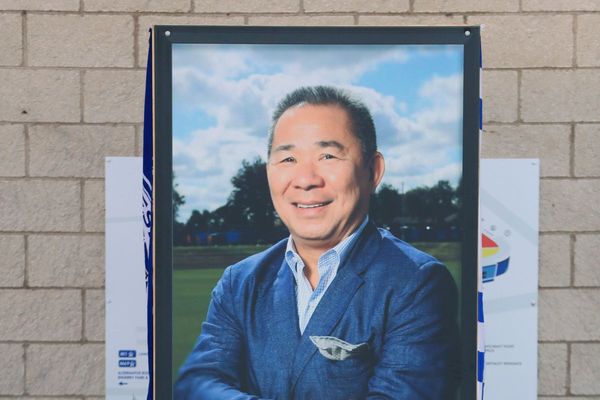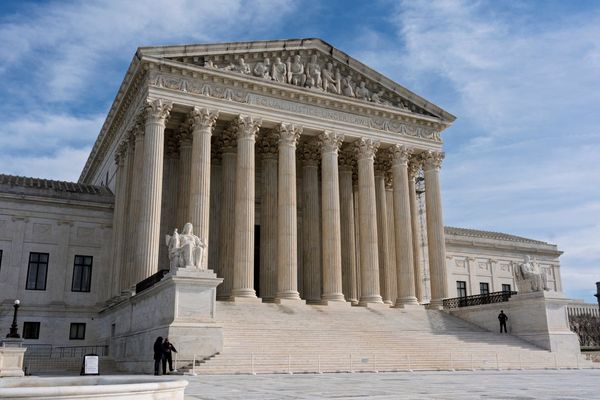
When America’s founders sat down to craft the structure of their brand new British spin-off, the preamble to the US constitution described the purpose of this experiment in democracy – to create a “more perfect union”.
The 14th amendment, which ended slavery, gave Black Americans more freedom while simultaneously spawning the imperfections of Jim Crow and a need for a civil rights movement. While this foundational goal of a more perfect union has served as a mission statement for some and an excuse for others, the rights of most Americans have gradually expanded. For the most part, America has slowly moved forward.
We are currently not in the most part.
On Saturday, an 18-year-old white supremacist traveled more than 200 miles to target Black residents of Buffalo, New York, in an attack inspired by the “great replacement theory” – the increasingly popular notion that America’s white majority is being intentionally replaced by a multiracial, multi-ethnic population.
While more Americans are becoming aware of the theory, it is not new. It is the same concept that once made interracial marriage illegal, spawned Jim Crow and motivated southern segregationists to switch to the Republican party. At its foundation lies the desperate attempt to preserve and maintain control based on nothing more than being born into whiteness. It is about white power. Unfortunately (for the white majority), the only way to preserve white power is to stop moving forward.
It is easy to frame a lone gunman’s brazen act of lawlessness and the fearmongering ethnonationalism that produced it as a prototypical but rare act of white supremacy. But that narrative obscures a variety of legally sanctioned acts of violence inflicted upon America’s non-white populace every day.
The fight to create a less perfect union isn’t just reflected in white extremist terrorism and Fox News’s primetime lineup. It is an all-encompassing strategy bent on rewinding progress to a time when whiteness was synonymous with purity and perfection. Not since Reconstruction has this country so blatantly sought to reverse progress and strip away the most fundamental rights, including the right to vote, a woman’s right to control her body, and even the right to exist as a full and equal human being.
The leaked brief detailing the US supreme court’s draft ruling to overturn a woman’s right to choose is another expression of this great American moonwalk. If true, the institution that once decided that Black people “have no rights which the white man was bound to respect” will soon hand over the authority to decide whether or not women must carry a pregnancy to full term to 50 separate overwhelmingly white, male-dominated state legislatures.
The goal is to weaponize whiteness at the expense of everyone else’s freedom in the hopes of protecting white sovereignty.
Florida’s Republican governor, Ron DeSantis, has been pushing legislation that makes the American education system less perfect by criminalizing critical race theory and antiracist literature. By painting Black history as a “woke agenda” that could turn white babies into progressive thinkers, Republicans don’t have to worry about their children’s past being erased by the fragility of the majority. At worst, the pro-racist movement has simply condemned their children to the same uninformed-but-palatable potion that has always aided America’s ability to stomach the sins of the past. For them, learning the truth of American-style racism is too treacherous a step forward. Still, this erasure confirms the essential premise of white supremacy: Black children’s history is less important than white children’s comfort.
Though we may all bemoan the rise of Trump-style authoritarianism, the end of democracy is theoretical only to white voters. For Black voters, it is a return to the imperfect past. In a country where Black voters wait longer, travel further and are less likely to have their vote counted, 19 states have more restrictive voting laws – nearly all of which will disproportionately affect the Black electorate. Studies, investigations and judicial rulings have concluded that the specific intent of voter ID laws, poll closures and gerrymandering is to restrict access for voters of color. In September, three North Carolina judges ruled that the state’s photo ID law “was motivated at least in part by an unconstitutional intent to target African American voters”.
Yet in February, the supreme court reversed a lower court ruling that required Alabama to redraw its congressional districts. The justices didn’t disagree with the lower court’s assessment that “Black voters have less opportunity than other Alabamians to elect candidates of their choice to Congress”, they simply decided that redrawing the maps would confuse voters and burden the state legislators. Again, the court essentially determined that the comfort of white voters is more important than Black voters’ political will. Perhaps there is no better metaphor for the concept of white supremacy. And I know what you’re thinking. But what happened in Buffalo – while tragic – is not an example of white supremacy.
White supremacy is not defined by the outlandish violence that enraptures racial extremists. This white domestic terrorism is the result of the belief that white people are entitled to the superior position that they enjoyed for most of this country’s history. While becoming a more perfect union has always been our publicly stated goal, the US has always been engaged in the preservation of white power. But that started at a time when the slaveowners and slavery apologists who penned America’s founding document couldn’t possibly fathom the idea that white men wouldn’t have perpetual possession of America’s reins. When they said “we the People”, they meant “white people”. They just want to make sure it stays that way. But I understand …
Nobody’s perfect.
Michael Harriot is a writer and author of the upcoming book Black AF History: The Unwhitewashed Story of America







